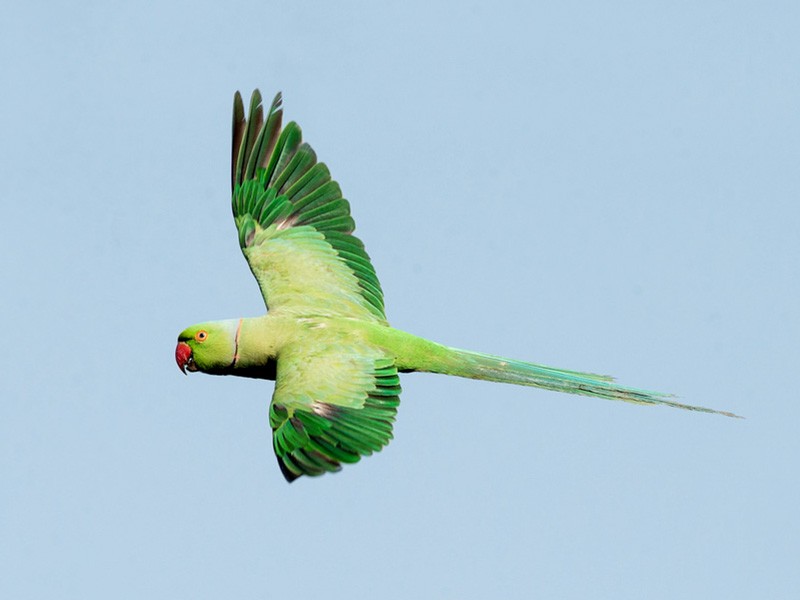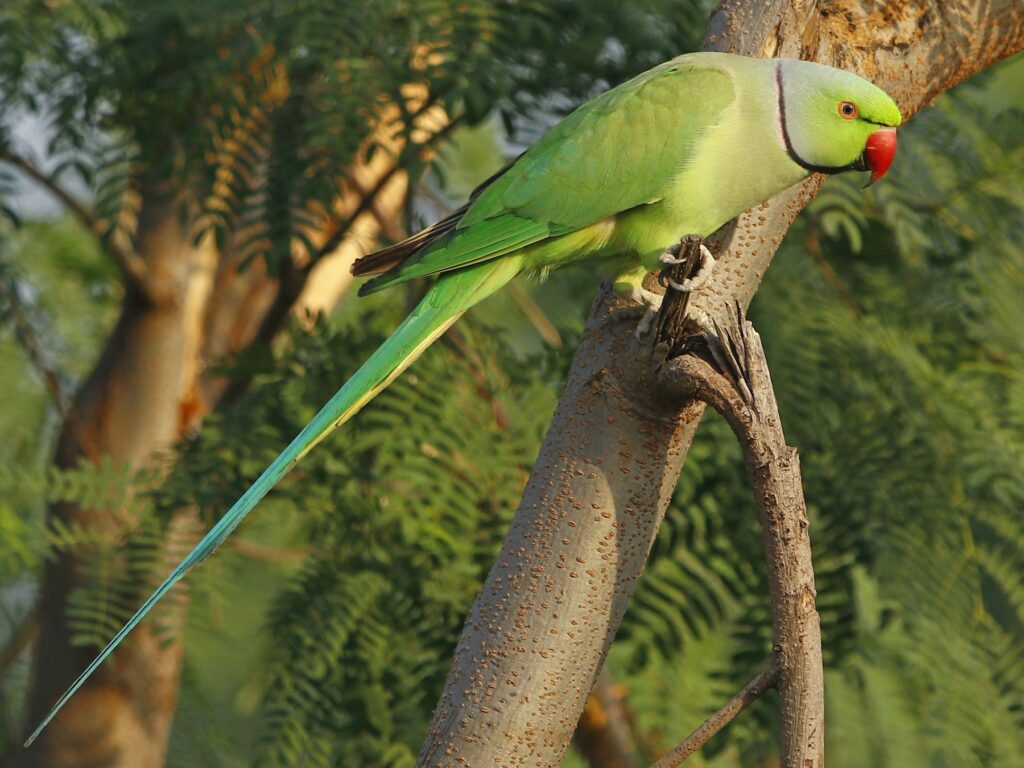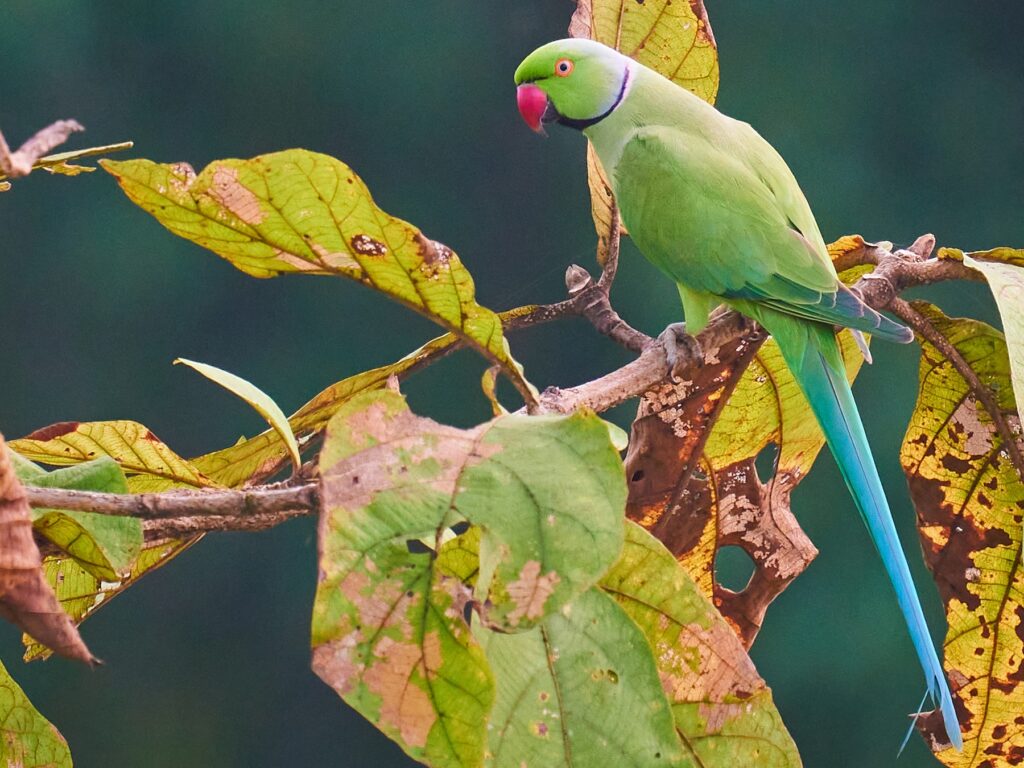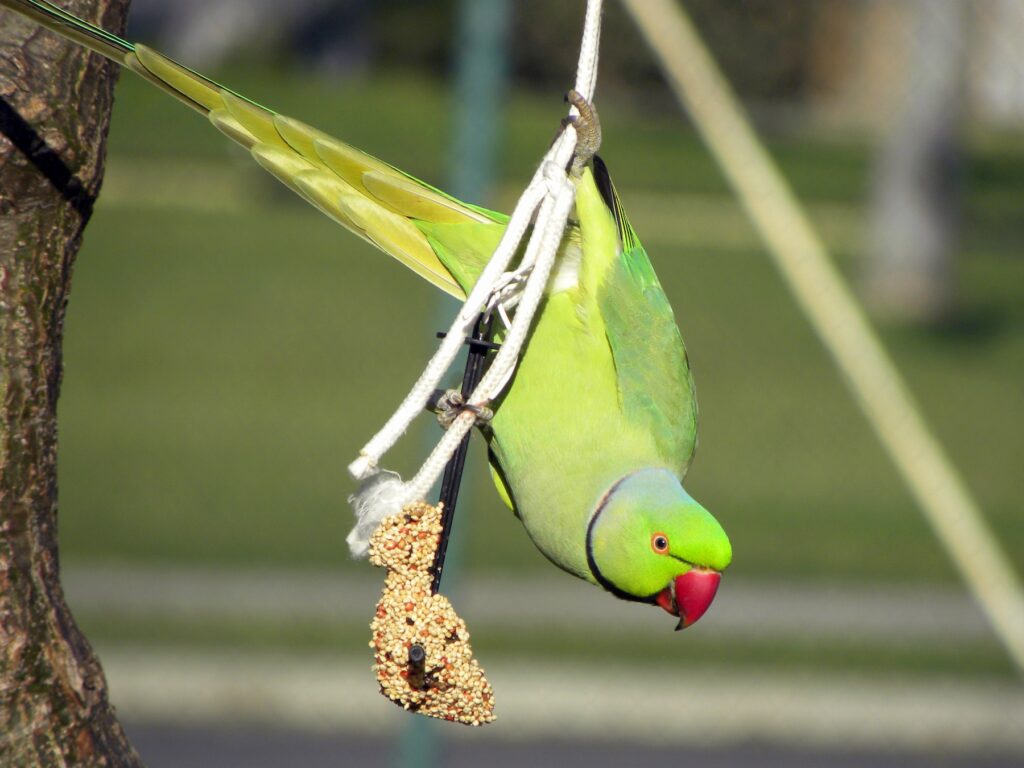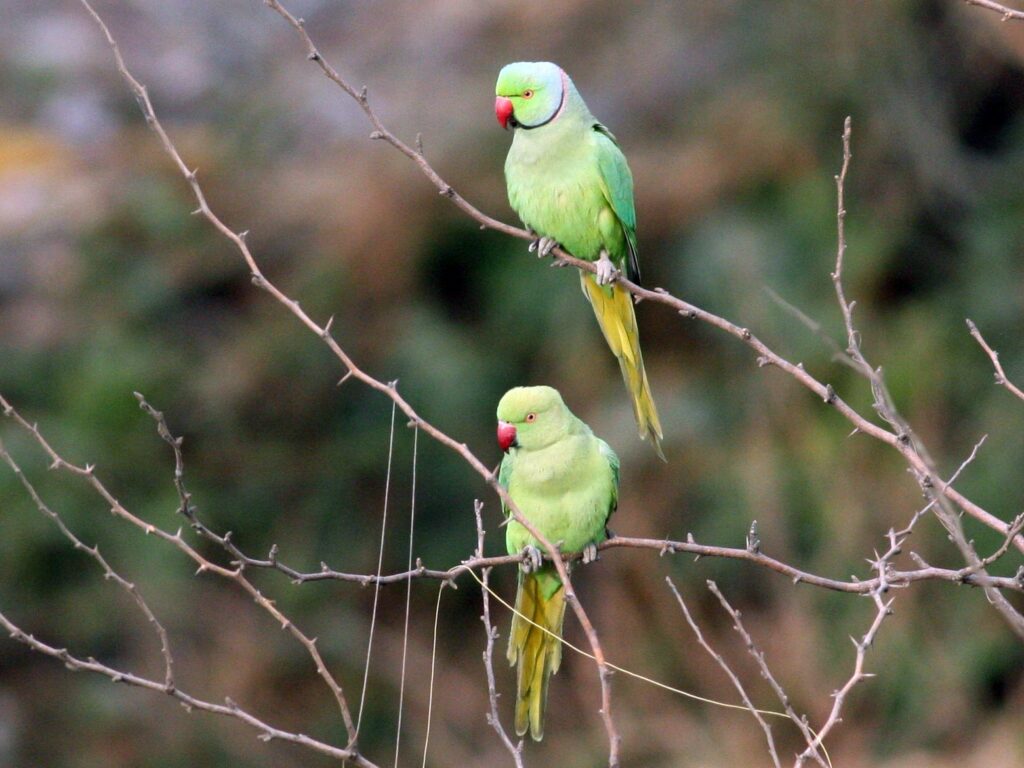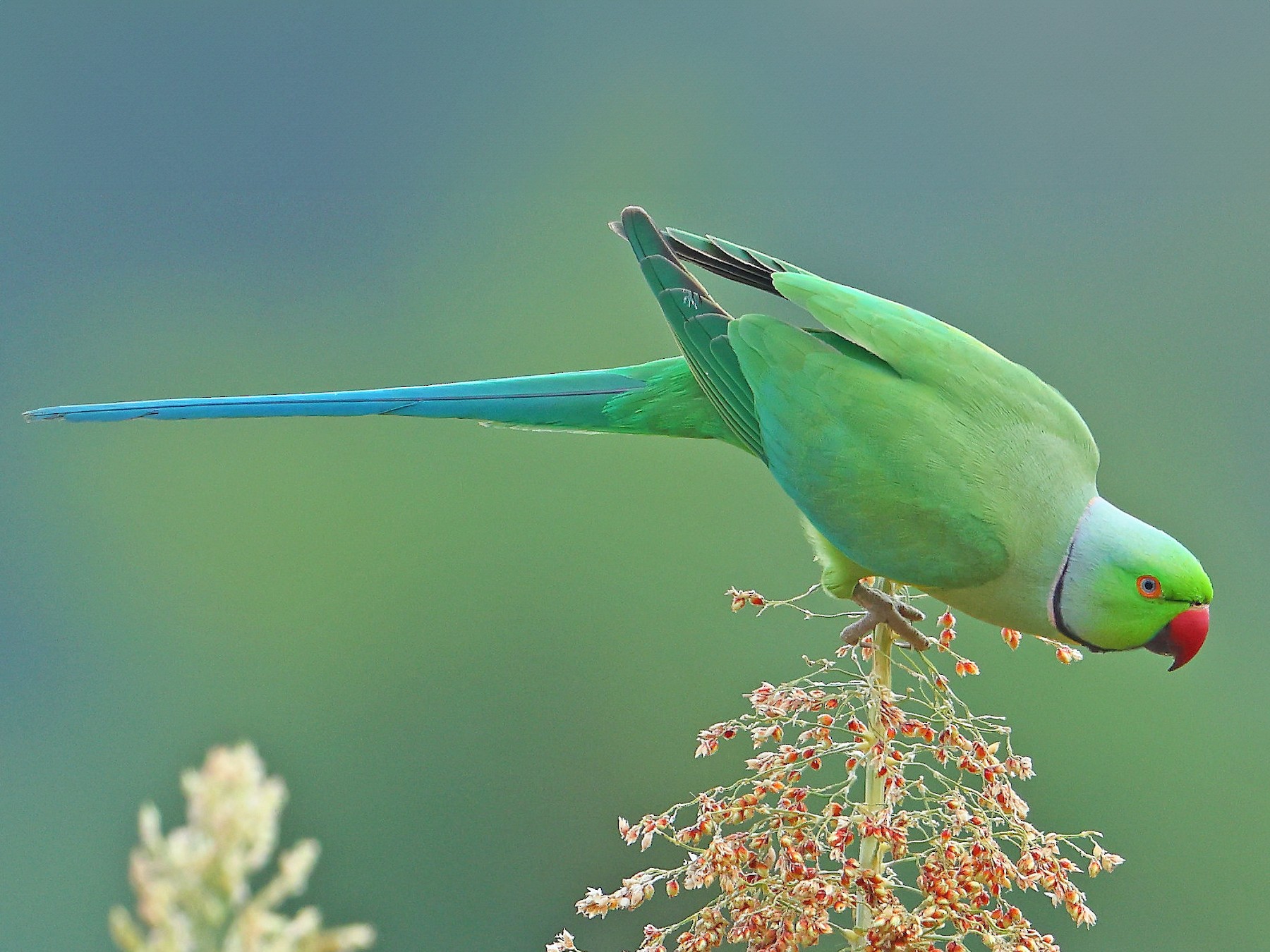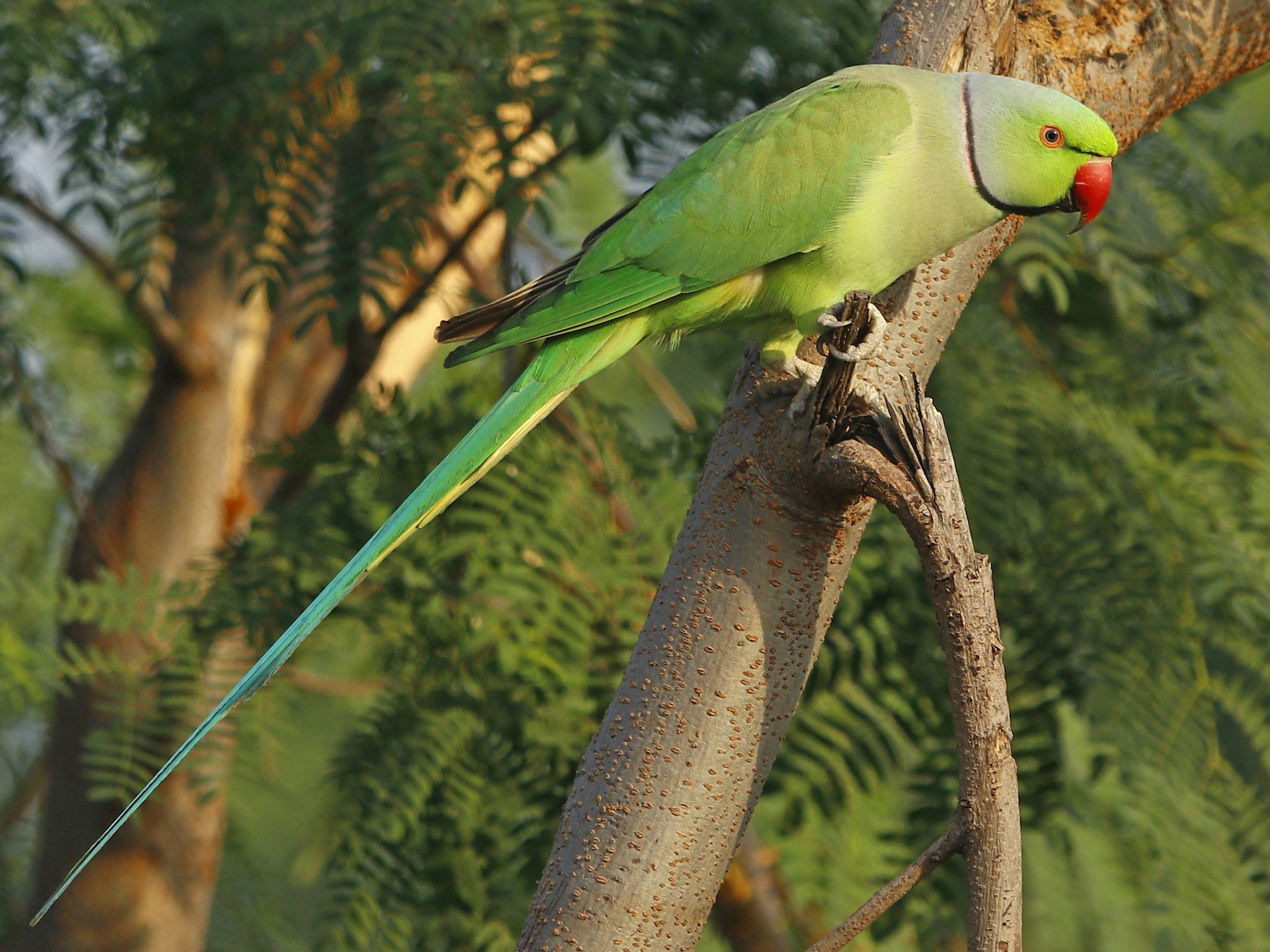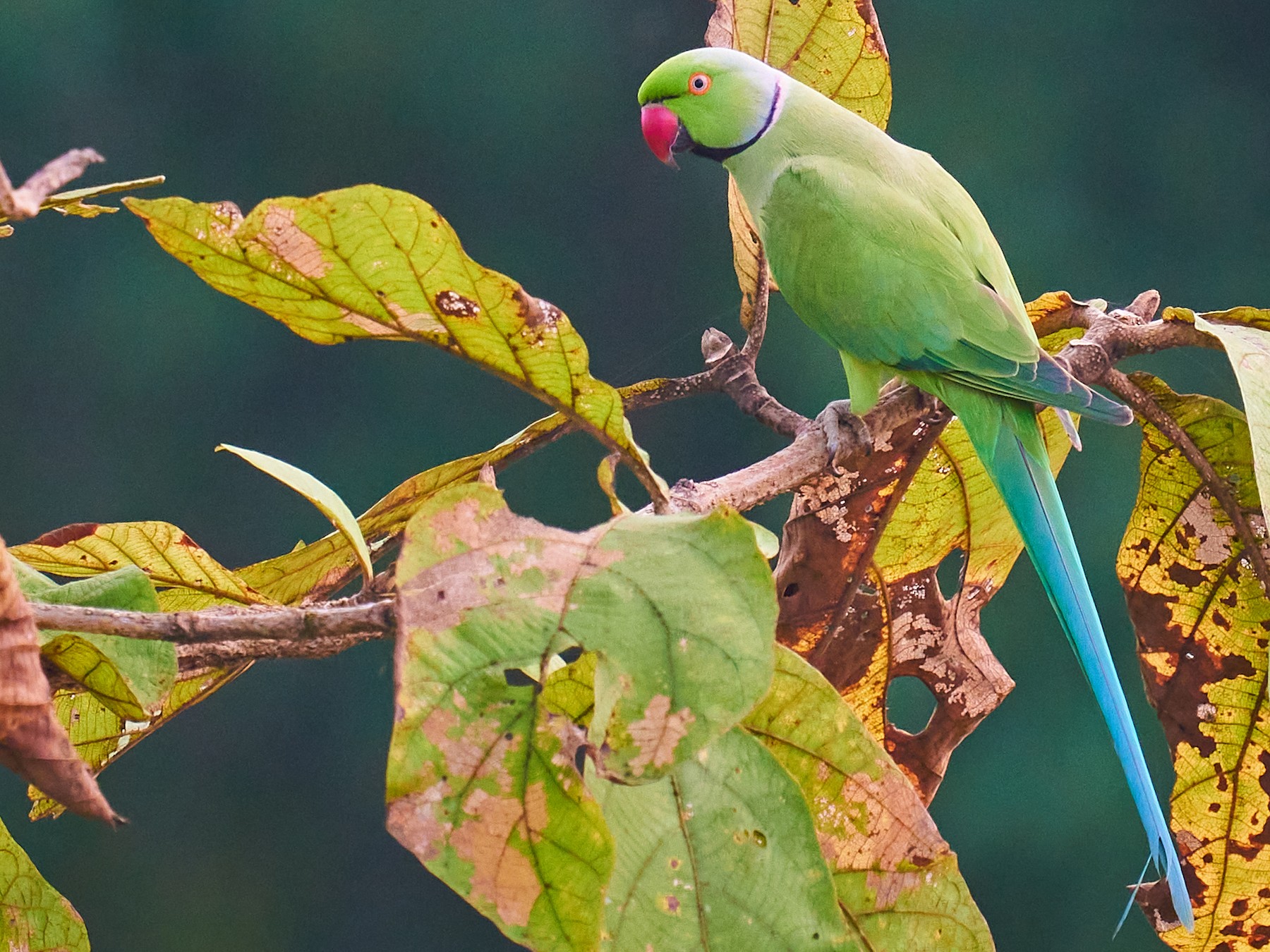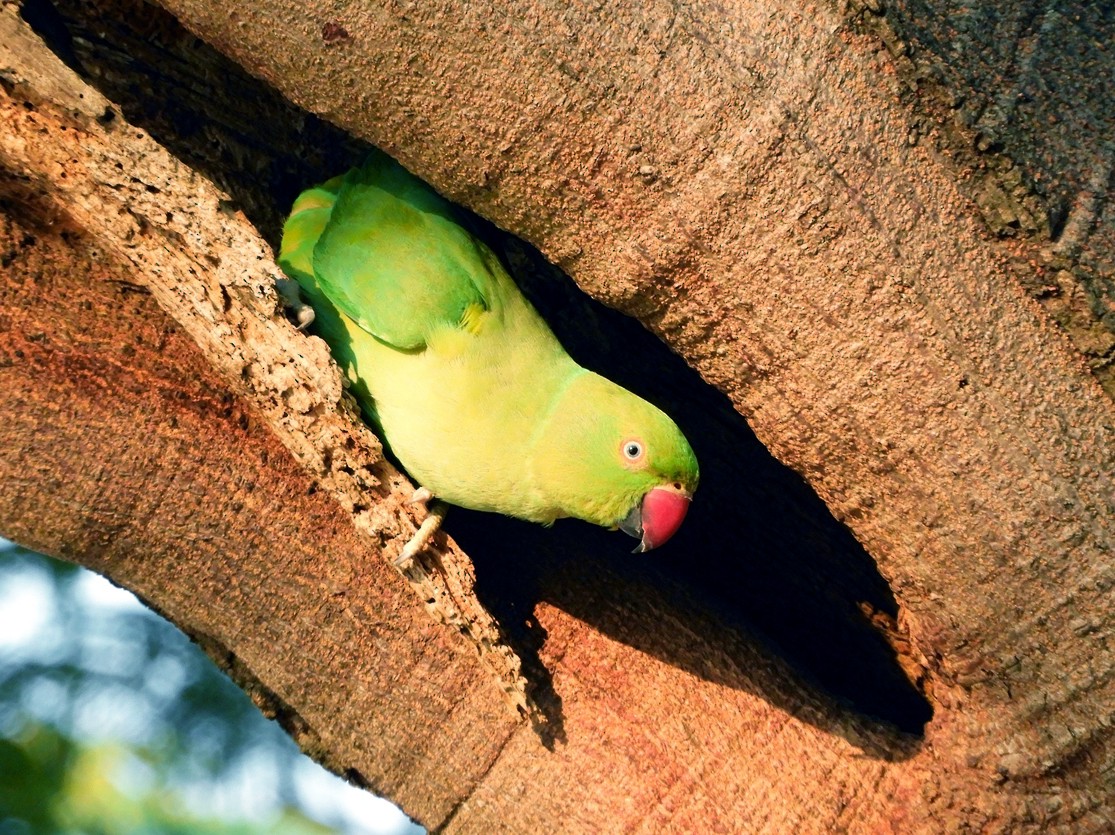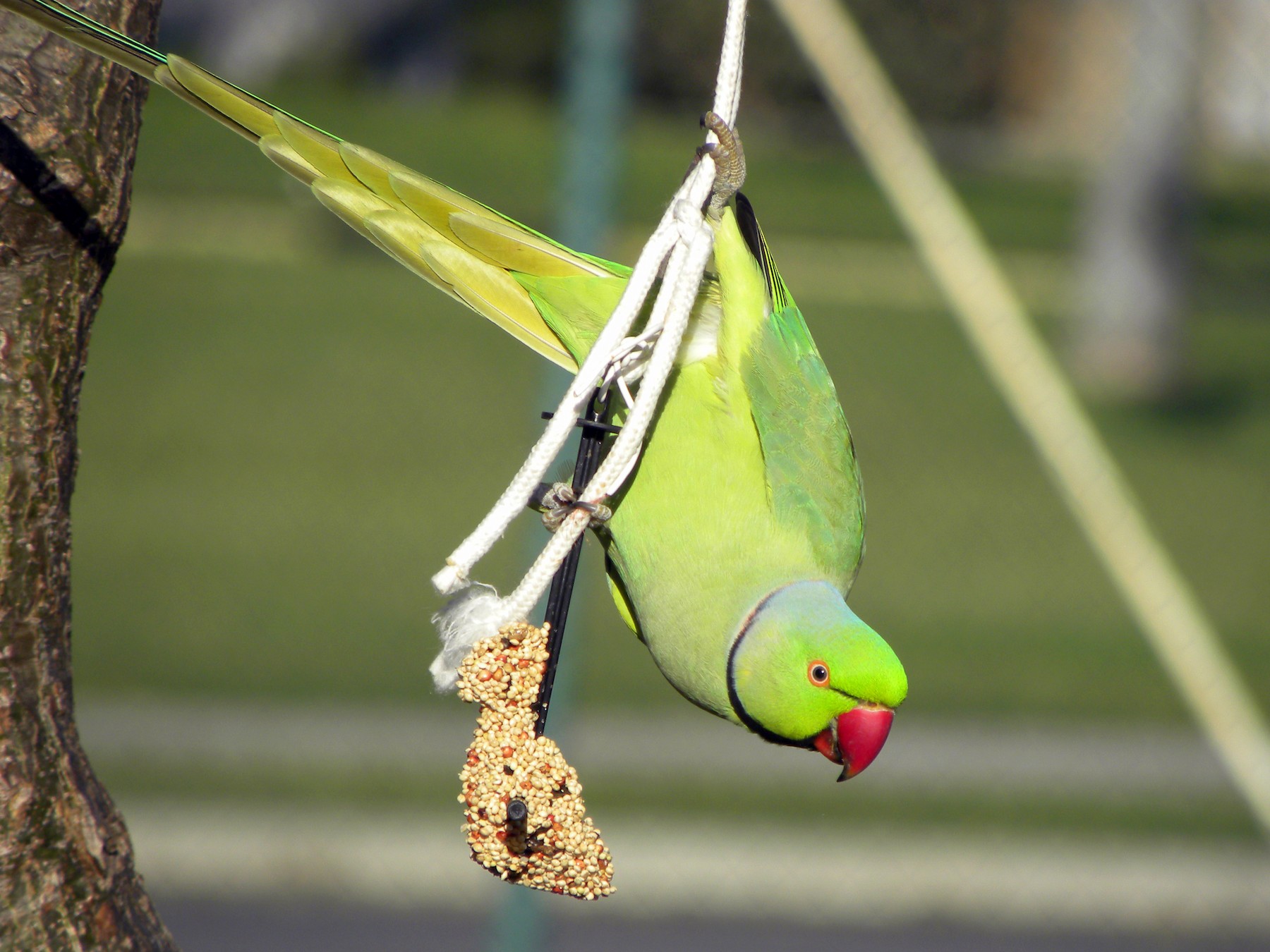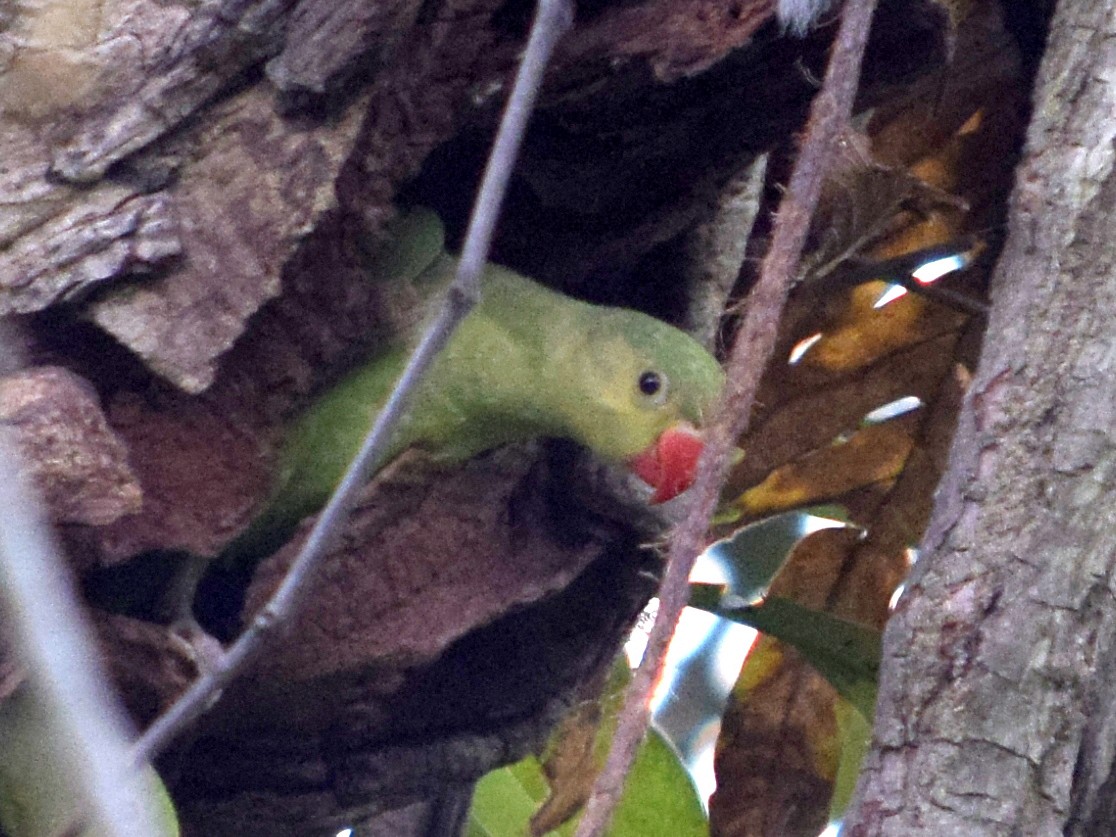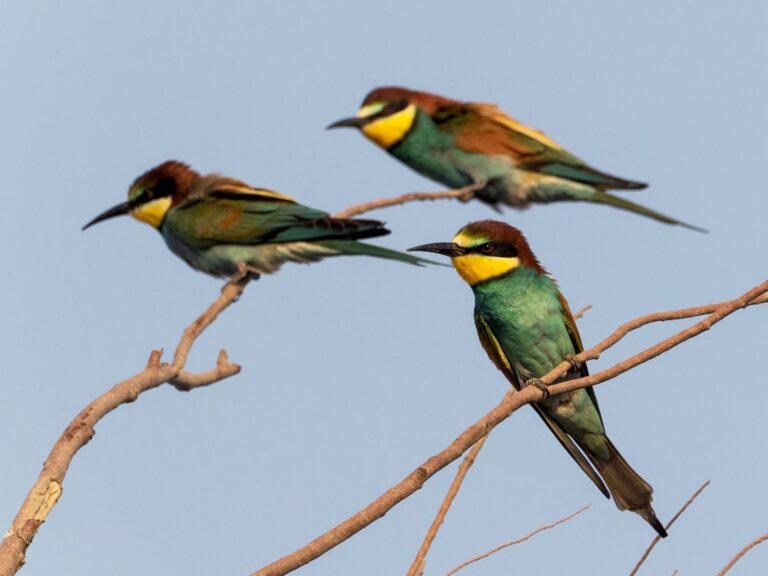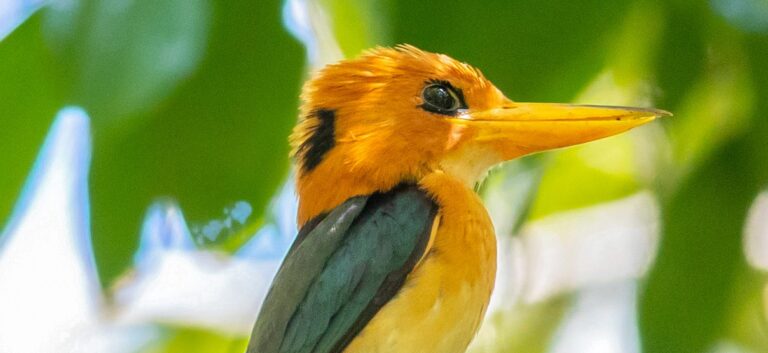Rose-ringed Parakeet: The Colorful Avian Marvel Thriving in Urban Landscapes
The rose-ringed parakeet, or Psittacula krameri if you want to get technical, really stands out with its bold green feathers and that unmistakable collar. You’ll spot these parakeets in all sorts of places around the world, which says a lot about how tough and adaptable they are.
They seem to pop up in cities and wild spaces alike, and their numbers are on the rise in plenty of countries far from their original home. It’s not rare to see them darting through parks or even snacking in backyard gardens.
Behavior-wise, these birds are social butterflies, always on the move in noisy flocks. Their calls? Let’s just say you’ll hear them before you see them.
People have kept them as pets for ages, drawn in by their looks and personalities. But there’s a flip side—sometimes they clash with native species, fighting for food and nesting spots.
If you’re curious about what makes them tick, looking at their diet and daily habits can be pretty revealing. It helps explain why they fit in just about anywhere, from quiet woods to the heart of the city.
Key Takeaways
- Rose-ringed parakeets adapt easily and show up in all kinds of places.
- They’re flock birds—always in a group, rarely alone.
- Humans find them fascinating, but their arrival can stir up some environmental headaches.
Taxonomy and Physical Description
Psittacula krameri is the scientific name for the rose-ringed parakeet. Let’s break down what makes this bird so recognizable, from its markings to the subtle differences between males and females.
Scientific Classification
Rose-ringed parakeets fit into the family Psittaculidae. Here’s their place in the animal world:
- Kingdom: Animalia
- Phylum: Chordata
- Class: Aves
- Order: Psittaciformes
- Family: Psittaculidae
- Genus: Psittacula
- Species: krameri
People often call them ring-necked parakeets, a nod to that neck ring—especially obvious in adult males. Knowing their taxonomy gives us clues about their habits and where they like to live.
Physical Characteristics
These birds are mostly green, and honestly, they’re hard to miss when the sun hits their feathers. Adult males show off a red and black neck ring—sort of like a built-in necklace.
They measure about 16 to 18 inches long, with long, pointed tails that add to their sleek look. The rounded neck and bright beak just make them even more eye-catching.
Younger birds, though, don’t have that flashy neck ring and their colors seem a bit duller. They blend in more until they grow up.
Sexual Dimorphism
Males and females aren’t quite twins. Adult males sport that bold red and black ring, while females go without.
Females run a bit smaller and their colors aren’t as intense. That might help them fly under the radar during breeding season, who knows?
It’s tough to tell young males from females until they mature and the neck ring comes in. This difference plays a part in how they pair up and breed.
Want to dig deeper? Check out these studies on their population biology and global invasion success.
Distribution and Habitat
Originally from the Indian subcontinent, rose-ringed parakeets now turn up in all sorts of places. Their knack for adapting lets them settle everywhere from busy cities to quiet farmland.
Native Range
They started out in India, Sri Lanka, and parts of Southeast Asia. Forests, gardens, and orchards are their go-to spots, especially where fruit and seeds are easy to find.
They love tall trees for nesting and hiding from predators. You’ll also find them in Egypt, sticking mostly to warm climates.
Introduced Populations
Lately, they’ve made themselves at home far from where they started. London and other European cities have growing populations, and you’ll see them in southern California and Hawaii too.
People sometimes worry about what these birds mean for local wildlife and crops. They compete with native birds and can hit farmers’ yields pretty hard.
Typical Environments
Rose-ringed parakeets aren’t picky—they thrive in city gardens, raiding fruit trees and feeders. Farmland is another favorite, especially in places like California and Hawaii.
London’s Kensington Gardens? That’s basically a parakeet hangout. The mix of trees and open spaces gives them perfect places to nest and forage.
Honestly, their ability to make almost anywhere home is impressive. They’ve got a way of fitting in, whether it’s a city park or a rural orchard.
Behavior and Ecology
Rose-ringed parakeets have some quirky social habits and instincts that help them survive. Their flocking, breeding, and seasonal routines all play a part.
Flocking and Social Structure
These birds almost never go solo. You’ll see them in flocks from just a handful to hundreds, which makes sense for safety and finding food.
They’re chatty, using all sorts of calls to keep in touch and warn each other about danger. Pair bonds form during breeding season, and those connections help them forage and dodge predators.
Breeding and Nesting
Spring and summer are their favorite times to breed. They look for tree cavities or even man-made nooks to build their nests.
Palm trees are a top pick—they offer good cover from predators. The female usually lays three to six eggs, and both parents help keep them warm.
Chicks hatch helpless and depend on their parents for everything. In about four to six weeks, they’re ready to leave the nest and join the flock.
Migration and Seasonality
Most rose-ringed parakeets stick to the same areas, but some move around locally when food gets scarce. Seasonal changes can push them to explore new places.
When conditions are right, they’ll expand into fresh territory. Their flexibility is a big reason why they’re such successful invaders in places far from home.
Diet and Feeding Habits
Rose-ringed parakeets eat a little bit of everything—seeds, fruits, and other plant stuff. They’re opportunists, which helps them fit into all sorts of environments.
Sometimes they cause headaches for farmers by munching on crops. It’s a love-hate relationship, honestly.
Natural Diet
In the wild, these birds snack on seeds, fruits, berries, and nuts. Corn and peas are big favorites, and they don’t turn down a ripe date if they find one.
They’ll go for buds and flowers too, picking up nutrients wherever they can. Bird feeders in cities? They’re not shy about stopping by, even grabbing tossed-out fruits and veggies.
Feeding Behavior
They’re pretty clever eaters. With strong beaks, they crack open tough seeds and nuts that other birds might just ignore.
Early morning and late afternoon are prime foraging times. You might catch them hanging upside down or climbing branches to reach a snack.
They often feed alongside their mates or flock, sometimes sharing food. That social side shows up even at the dinner table.
Impact on Agriculture
These birds play a role in their ecosystems, but they can be rough on crops. Corn, peas, and fruit orchards take the brunt in areas with lots of parakeets.
Farmers have to get creative—scare tactics and barriers are common to keep the birds at bay. It’s a constant push and pull between wildlife and agriculture.
Human Interactions and Conservation
The relationship between rose-ringed parakeets and people is complicated. Sometimes it’s great, sometimes not so much.
They’re a hit in the pet trade, but their wild populations and impact on native species can be a real challenge for conservationists.
Role in the Pet Trade
People love these birds for their bright colors and playful personalities. They’re popular pets, and their ability to mimic sounds just adds to the appeal.
This popularity drives both domestic breeding and wild trapping, which isn’t always great for wild flocks. Illegal trapping can hurt native populations and upset local ecosystems.
Anyone thinking about getting a rose-ringed parakeet should be ready for the commitment. They need space, social time, and proper care—no shortcuts.
Invasive Species Concerns
The number of rose-ringed parakeets keeps climbing in more and more countries. People are worried about them being an invasive species.
These birds settle right into urban areas, and that’s not always great news for local wildlife. They can outcompete native birds for food and nesting spots, especially in places like the UK.
Some folks have noticed native bird numbers dropping where parakeets show up. Ecosystems can get shuffled around as a result, so scientists and conservationists watch these changes pretty carefully.
Rose-ringed parakeets seem to do especially well in places hit by deforestation. When people clear land, these birds swoop in and take advantage of the new habitats.
This knack for adapting makes things tricky for anyone trying to protect native species. Conservation efforts have to work twice as hard when newcomers keep thriving.
Conservation Status
The IUCN lists the rose-ringed parakeet as Least Concern. They’re spread out over a huge range and their populations are pretty solid, but that doesn’t mean they’re totally in the clear everywhere.
Some areas deal with habitat loss and run-ins with people, which puts certain groups of these birds at risk. It’s not a uniform picture across the board.
People are trying to get the word out about why conservation matters. It’s honestly important for communities to realize how keeping these birds as pets can affect things.
Raising awareness might help keep rose-ringed parakeets in the wild where they belong, or at least reduce their impact. It’s a complicated balance, isn’t it?
Conservation work usually focuses on saving native habitats and figuring out how to handle invasive populations. When local communities get involved, things tend to work out better for both the birds and the ecosystem.
Frequently Asked Questions
Here’s where you’ll find answers to the most common questions about the Rose-ringed Parakeet. Stuff like how long they live, what they’re like, how to tell males from females, their habitats, care tips, and even what kinds of noises they make.
What is the average lifespan of a Rose-ringed Parakeet?
Most Rose-ringed Parakeets live 15 to 25 years if they’re in captivity. Out in the wild, things like predators and tough weather can cut that down.
What are the typical behaviors of a Rose-ringed Parakeet in captivity?
These parakeets are pretty social and love interacting with people or other birds. They’ll climb around, play with whatever toys you give them, and really seem to enjoy puzzles or anything that keeps their brains busy.
How can one differentiate between a male and female Rose-ringed Parakeet?
Adult males usually show off a black or blue ring around their necks. Females don’t have this ring and tend to look more olive-green, especially near their throats.
What is the natural habitat of the Rose-ringed Parakeet?
You’ll find these birds in forests, woodlands, and even city parks across South Asia and parts of Africa. They stick to places with lots of trees and easy access to food.
Are there any special care requirements for Rose-ringed Parakeets?
They need a roomy cage, a mix of foods, and plenty of toys or social time to stay happy. Don’t forget regular vet visits to keep them healthy.
What are the common vocalizations and sounds made by Rose-ringed Parakeets?
Rose-ringed Parakeets love to make a racket with their loud, chattering calls. If you listen closely, you’ll notice they can mimic sounds and even short phrases.
That talent makes them pretty entertaining companions, especially when you keep them in captivity.
